Of the 12 courses that I planned to see during my 2016 summer tour of southwestern England and Wales, Pennard was, with the also-James-Braid-designed St. Enodoc, at the top of the list. Like many of the courses that I wanted to see in the UK, this was thanks to Tom Doak’s description of it as a wild and rustic place, with horses running across the fairway. Now in the two previous days I had seen Cleeve Hill and Southerndown, so this course was unlikely to impress me with rusticity. But I love quirky courses, especially quirky links courses (a bit redundant…), so I was really looking forward to it.
Like the Addington, I think that the quirkiness of Pennard has been overstated by a bit. I’m sure that things were different 30 years ago--I'm sure that the maintenance practices have become more refined--but I found the course to be a very strong test of golf and not really all that quirky. There are a few severe holes, especially the seventeenth, but the course isn’t really competitive in quirkiness compared to say Painswick or Perranporth. It’s none the worse for that though—while Pennard is maybe a bit lacking as far as world class holes (I’d only nominate the seventh), it’s consistently solid and interesting, requiring good control of your ball to keep it in some of the steeply pitched fairways.
The par 4 first features a drive that narrows somewhat the further you go and slopes gently off to the right. I hit a fade and found it to be a bit of a tough opening tee shot, but it really isn’t too bad. The main difficulty here is that unless you can drive it about 330 yards, you’ll have a blind shot to the green. This shouldn’t be too much of a problem though because the green is wide open in front. The green is in a classic links setting and runs gently away to the back.
Like the Addington, I think that the quirkiness of Pennard has been overstated by a bit. I’m sure that things were different 30 years ago--I'm sure that the maintenance practices have become more refined--but I found the course to be a very strong test of golf and not really all that quirky. There are a few severe holes, especially the seventeenth, but the course isn’t really competitive in quirkiness compared to say Painswick or Perranporth. It’s none the worse for that though—while Pennard is maybe a bit lacking as far as world class holes (I’d only nominate the seventh), it’s consistently solid and interesting, requiring good control of your ball to keep it in some of the steeply pitched fairways.
The par 4 first features a drive that narrows somewhat the further you go and slopes gently off to the right. I hit a fade and found it to be a bit of a tough opening tee shot, but it really isn’t too bad. The main difficulty here is that unless you can drive it about 330 yards, you’ll have a blind shot to the green. This shouldn’t be too much of a problem though because the green is wide open in front. The green is in a classic links setting and runs gently away to the back.
The short par 3 second was undergoing some renovations during our visit. Speaking of Tom Doak, he was extending the small green up the dune behind it to create a deep, two-tiered green. The current version was nice and I especially liked the mound at the front-right, but the two-tiered version will certainly be more challenging and interesting.
There’s a lot of great links land behind and to the right of the second hole and I didn’t really understand why there needed to be a 120 yard walk to the third tee. Unless there was some environmental reason why they couldn’t use it, they could have routed the par 3 second from the first green right to the third tee.

Unless there were/are some restrictions on using the duneland in the upper right of the frame, I don't understand why instead of playing from right to left in the middle of the frame, the par 3 second doesn't just play from the first green in the bottom right to the third tee top center. It's slightly downhill and from what I remember, there was plenty of room to build a green.
But once you get to it, the par 4 third is a good one, doglegging left around the dunes. It’s a bit of an awkward driving hole with the fairway sloping right. The hole is only about 380 from the tips, so it’s best to play conservatively here. The green has front and back-right bunkers, making it very tough to go at any right hand pin…like we had on this day.
The drive on the ~550 yard par 5 fourth plays back over the third green and is pretty wide open. The approach is tough because of the bumpy fairway and the lack of aiming points. It’s probably best to play conservatively out to the right but like at the first, unless you hit it far enough, you won’t have a view of the sunken green.
I believe that the fourth green and the par 3 fifth are not Braid originals although neither is worse off for it. The fifth has a particularly interesting green although it’s quite narrow and would be difficult to hit in any kind of wind (we had very un-linkslike weather on this day; low 70s and calm).
I actually felt that the first five holes were ones that you might find on any standard, good links course. The terrain was rolling but not hilly and the was nothing odd about any of the holes. But Pennard starts to show itself with the sixth, an excellent, but difficult 400 yard uphill par 4 that doglegs gently left. It’s an awkward drive between a bunker about 195 on the left and another about 215 on the right with the fairway sloping left-to-right. It’s really helpful to be comfortable hitting a draw here.
But whatever you do off the tee, you’re not going to have a view of the green, which is sunken in a bowl. You will, however be able to see the flag if you drive it in the fairway.
But whatever you do off the tee, you’re not going to have a view of the green, which is sunken in a bowl. You will, however be able to see the flag if you drive it in the fairway.
While I thought that the sixth was an excellent hole, it doesn’t compare to the seventh, which must be one of the most stunning holes in the UK. I’m not sure that it’s one of the most strategically interesting holes because although there are bunkers in the center of the fairway, I don’t think that there’s much reason to play to the high left side—the approach will still be blind and the angle more awkward. But you do want to take on the fairway bunkers so that you have a short second…because the green is wild. One of the best greens that I’ve ever seen.
The 360 yard eights plays back up the hill and is characteristic of Pennard—tough driving hole with an elevated, well-defended green (fourteen is almost identical). The green is another dramatic one with a steep tier separating the back right from the rest.
The long par 4 ninth is another reverse camber hole, doglegging left but with the fairway sloping right. The fairway is also somewhat narrow and unless you hit a slight draw, you’ll probably end up in the right rough. The long approach—off a hanging lie to a left-to-right sloping green with trouble at the front left—is very tough.
The par 5 tenth is a bit awkward, with the fairway turning left at about 240 yards and running downhill through a boggy area. It’s easy to drive it through the fairway here but if you can hit a slight draw, you should be able to get your ball down to the flat. Although I didn’t figure it out in my two plays, I suspect that this drive wouldn’t be that hard for most good players because you don’t have to hit it very far before you catch the slope. You should be able to reach the green off a decent drive but again, it’s an uphill approach to a well-defended green.
The 180 yard par 3 eleventh green is built into the side of a hill but is a little deeper than it looks because it runs at a diagonal from front-left to back-right.
The next two holes are pretty similar, but twelve is a 300 yard par 4 and thirteen is a 200 yard par 3. The entire twelfth hole has an awkward left-to-right cant. You can ensure yourself a flatter lie on twelve by playing to the right, but the angle becomes awkward if you go too far right. It’s a very tricky pitch to the elevated green if you’re within 50 yards but out to the right. I didn’t give it a try, but the best play here might just be driver at the green, even if you don’t have the distance to reach. A puzzling hole, but one that I really liked.
Thirteen is a curious long par 3, with a fairway running up to the right and a small ridge dividing it from the shallow punchbowl green. The left side of the green is blind and very tough to hit unless you can carry it all the way on because there’s a dune in front. Playing pin high up the fairway to the right and pitching on isn’t a bad play.
Fourteen is very similar to the eighth, uphill and doglegging left. The second is more intimidating because the green is just over a ridge and the surface is blind from the fairway. I didn’t get a picture, but I remember this as one of the more interesting green surfaces on a course with several of them.
Part of the interest in the green surface on the short par 3 fifteenth is that it’s 40 yards deep and winds back and forth between bunkers and mounds. Again, we were treated to the difficult pin on the small shelf in the back. Any pin on the front half of the green is very gettable.
The par 5 sixteenth is one of the most famous at Pennard, plunging down to the cliffs edge. It’s a really good driving hole, with two bunkers on the high left side of the fairway up to 240 out. Unless you can reach the green in two (only 515 from the tips, so doable for many), you want to play up the left side so that you have a better view of the layup zone. It’s a very awkward layup because the fairway tilts sharply to the left and it’s easy to run through it if you’re playing down the slope from the right side. The green is elevated and the most steeply pitched (back-right to front-left) on the course.
Now we play back uphill for a second consecutive par 5 that most be one of the most divisive holes that I’ve played. Many seem to love it…I think it’s a mess.
Like the eighteenth hole at Southerndown (although this time not visible from the tee), the fairway has two tiers; high left and low right. You want to play at the left side if the fairway (if you can figure out where that is) because the fairway slopes sharply into gorse on the right. Hopefully your ball kicks into the right side of the fairway because the second is much more awkward from the left side; dunes and gorse block the view of much of the layup zone from here. If you’re in the right side, you have a fairly good view of the whole layup area.
While the hole is only about 490 yards, I can’t imagine that many can go for it in two because the fairway narrows considerably past 240 yards with gorse on both sides and the view of the green is blind until about 160 out. Best to play a long iron, then about a 7-8 iron and be happy if you’re playing from the fairway for your third. It probably didn’t help my opinion of the hole that I had an altercation with one of the locals who walked his dog right in front of us as we were trying to play our second shots, but it might have been my grumbling about the hole which caused me to pick that fight (which I lost) in the first place.
Like the eighteenth hole at Southerndown (although this time not visible from the tee), the fairway has two tiers; high left and low right. You want to play at the left side if the fairway (if you can figure out where that is) because the fairway slopes sharply into gorse on the right. Hopefully your ball kicks into the right side of the fairway because the second is much more awkward from the left side; dunes and gorse block the view of much of the layup zone from here. If you’re in the right side, you have a fairly good view of the whole layup area.
While the hole is only about 490 yards, I can’t imagine that many can go for it in two because the fairway narrows considerably past 240 yards with gorse on both sides and the view of the green is blind until about 160 out. Best to play a long iron, then about a 7-8 iron and be happy if you’re playing from the fairway for your third. It probably didn’t help my opinion of the hole that I had an altercation with one of the locals who walked his dog right in front of us as we were trying to play our second shots, but it might have been my grumbling about the hole which caused me to pick that fight (which I lost) in the first place.
The final hole is a long par 4 that’s probably too narrow for a links course, but I liked it anyway. It also plays downwind, so you can use a shorter club and still get within a midiron of the green. I failed again to get a picture of the green, which was another of the course’s best.
Pennard ended up being my favorite course on our trip…although that might be because trying to play St. Enodoc in a 25 mph. sustained wind was a nightmare. Contrary to my expectations, it’s a championship calibre course—although probably a bit too short for a top level men’s competition today. Also much to my surprise, it was one of the best conditioned courses that I played in southwest England/Wales. The fairways were good and the greens were fast. No horses, but there was a herd of cattle between the sixth and seventh holes. But unlike many of the other courses that I played on this trip, the livestock hadn’t left much of a mark on the course.
But I also have to say that when I go back over Pennard hole-by-hole, I’m not sure that it’s quite as strong as I thought when I was there. It’s a James Braid course and while I count several of his courses among my favorites, each has its flaws. Usually this is because they’re on property that’s uninteresting (didn't play one of those), awkward (St. Enodoc), or just over-the-top (Perranporth). But the land at Pennard is outstanding—there’s more than enough room for eighteen holes here although parts of it are quite steep. There are spots here, especially at the beginning of the round, where I think that the course could get more out of the land. And there’s plenty enough land that the abomination that is the seventeenth hole could have been avoided.
But so what? Maybe Pennard doesn’t belong on a list of world top 100 courses. It’s still an excellent course and right at the top of the list of courses that you must play if you get to west England/south Wales. Some might find the comparison abhorrent, but it reminds me a bit of the first course at Arcadia Bluffs in Michigan—both dunesy and hilly, sloping toward the cliffs edge with a few awkward/over-the-top holes but many solid ones. Pennard’s certainly a better walk than Arcadia Bluffs (which was designed for golf carts), but it also doesn’t have as many outstanding holes. But overall it’s a much better place for the game, requiring none of the environmental destruction of some of our modern courses and having none of the expensive maintenance practices. I wish that we had courses like Pennard in the US.
But I also have to say that when I go back over Pennard hole-by-hole, I’m not sure that it’s quite as strong as I thought when I was there. It’s a James Braid course and while I count several of his courses among my favorites, each has its flaws. Usually this is because they’re on property that’s uninteresting (didn't play one of those), awkward (St. Enodoc), or just over-the-top (Perranporth). But the land at Pennard is outstanding—there’s more than enough room for eighteen holes here although parts of it are quite steep. There are spots here, especially at the beginning of the round, where I think that the course could get more out of the land. And there’s plenty enough land that the abomination that is the seventeenth hole could have been avoided.
But so what? Maybe Pennard doesn’t belong on a list of world top 100 courses. It’s still an excellent course and right at the top of the list of courses that you must play if you get to west England/south Wales. Some might find the comparison abhorrent, but it reminds me a bit of the first course at Arcadia Bluffs in Michigan—both dunesy and hilly, sloping toward the cliffs edge with a few awkward/over-the-top holes but many solid ones. Pennard’s certainly a better walk than Arcadia Bluffs (which was designed for golf carts), but it also doesn’t have as many outstanding holes. But overall it’s a much better place for the game, requiring none of the environmental destruction of some of our modern courses and having none of the expensive maintenance practices. I wish that we had courses like Pennard in the US.
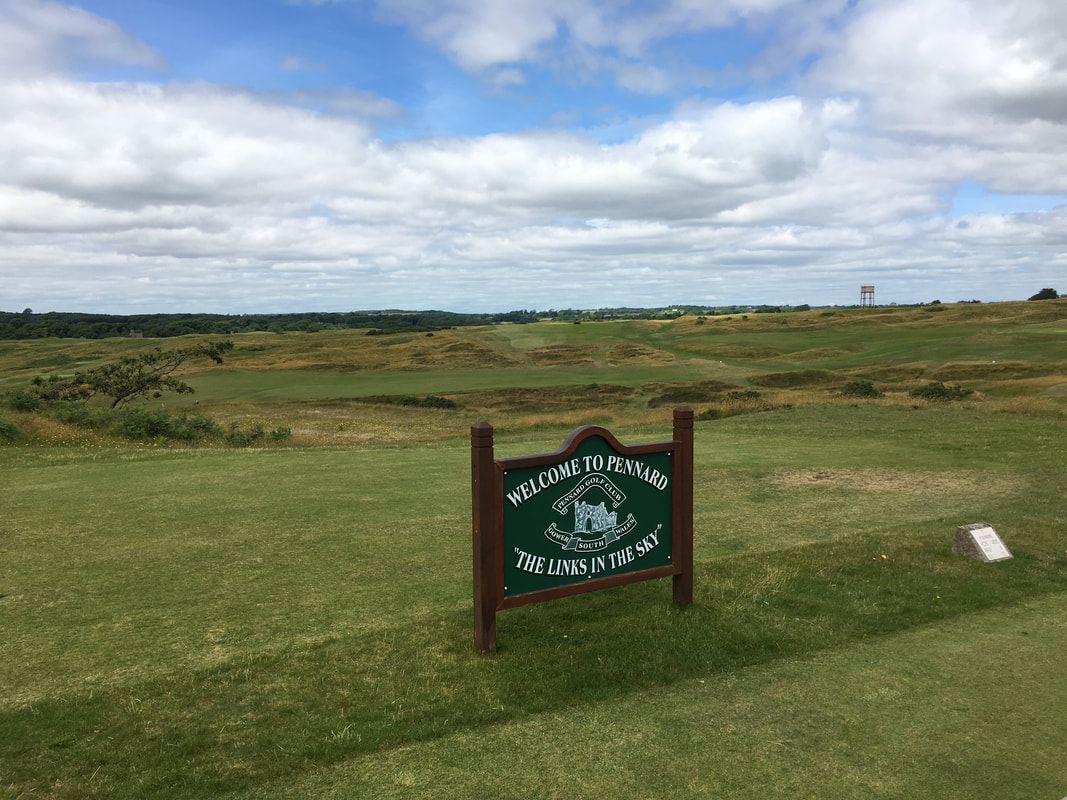

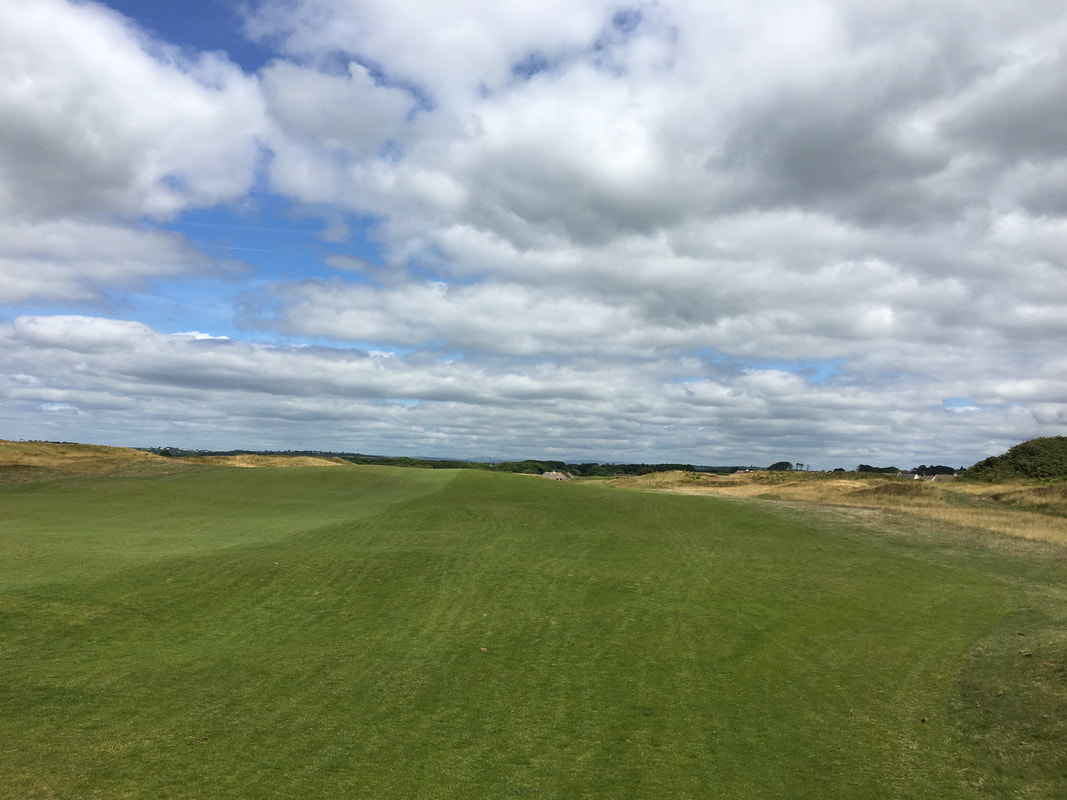

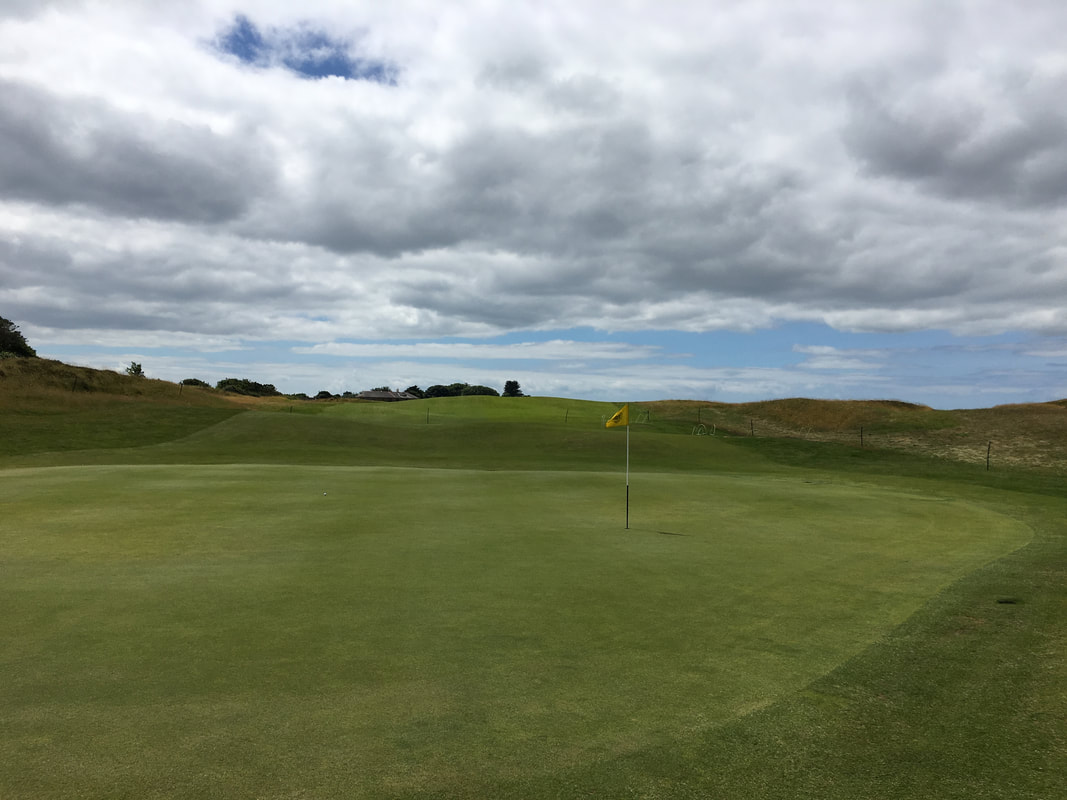
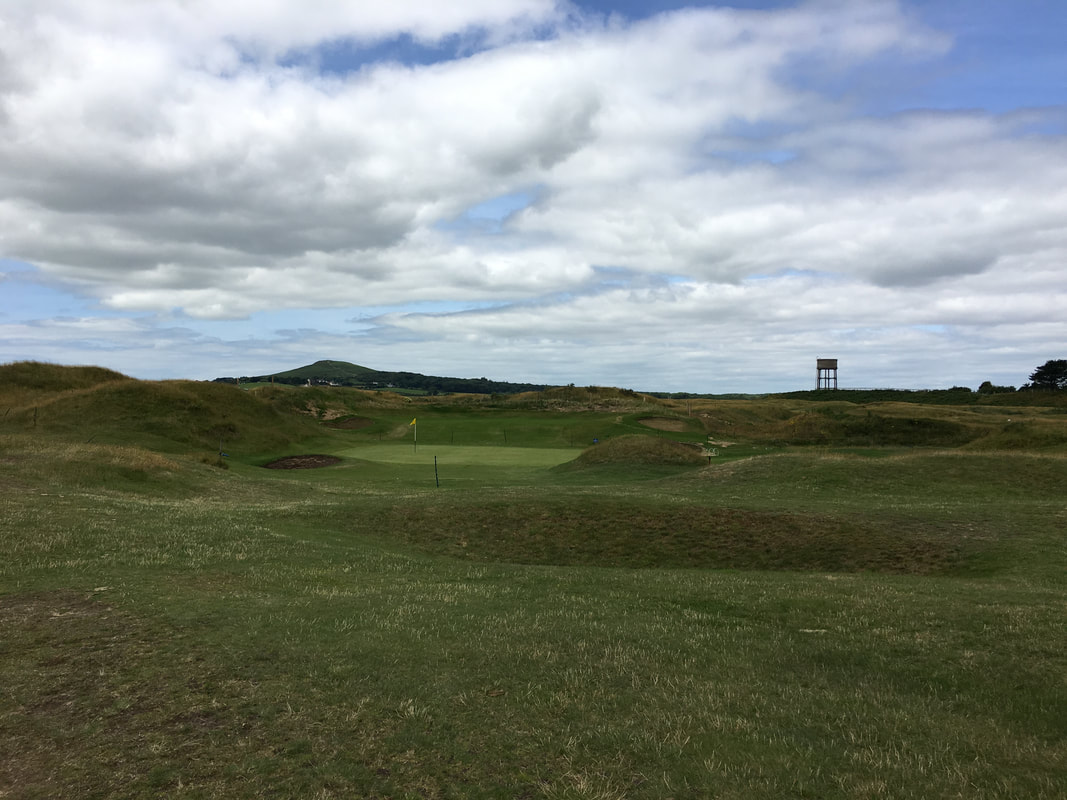







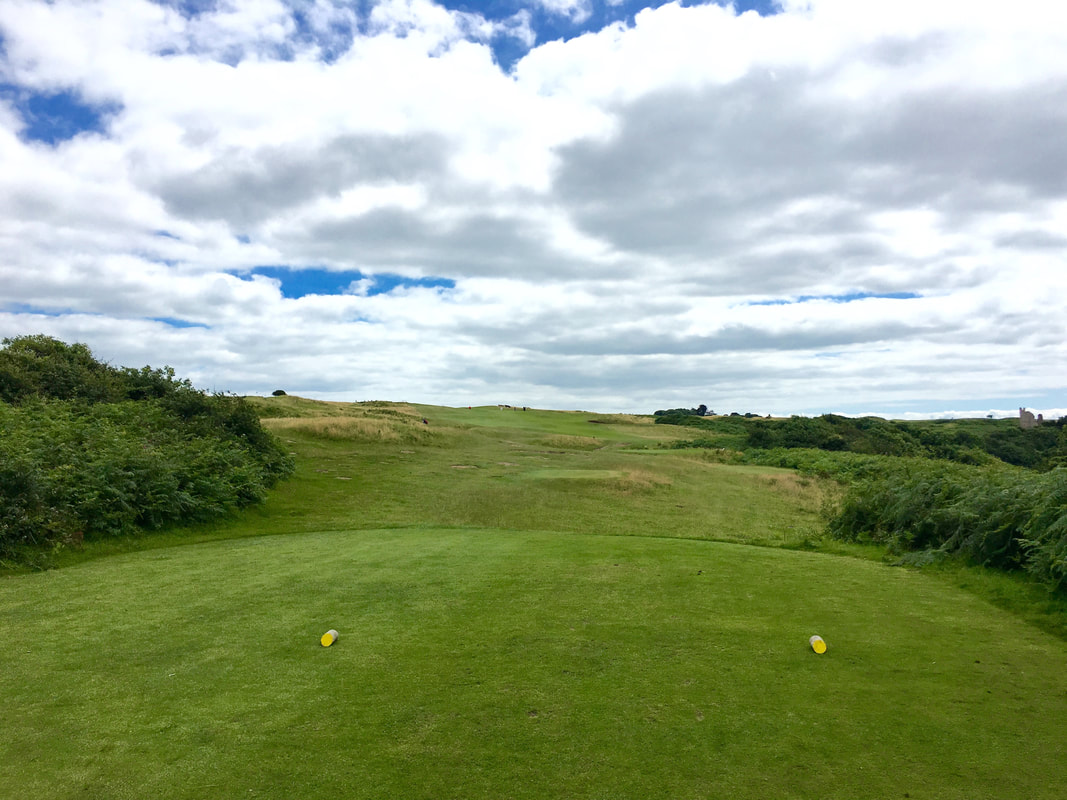







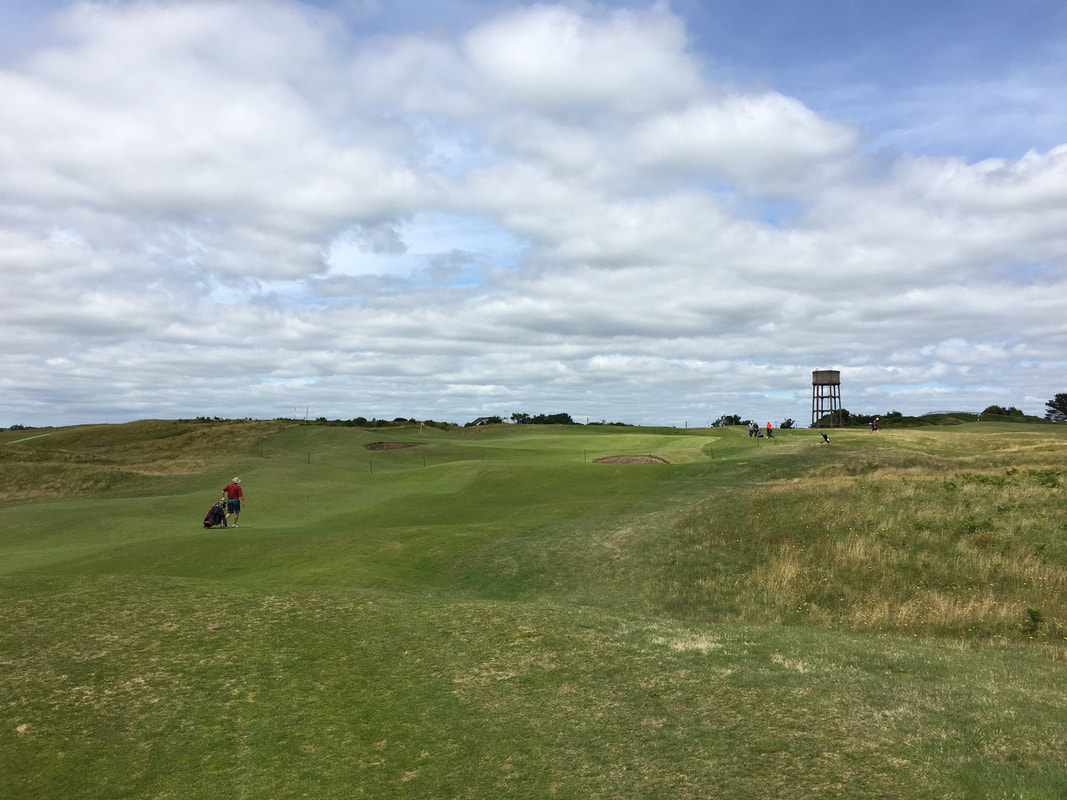




















 RSS Feed
RSS Feed